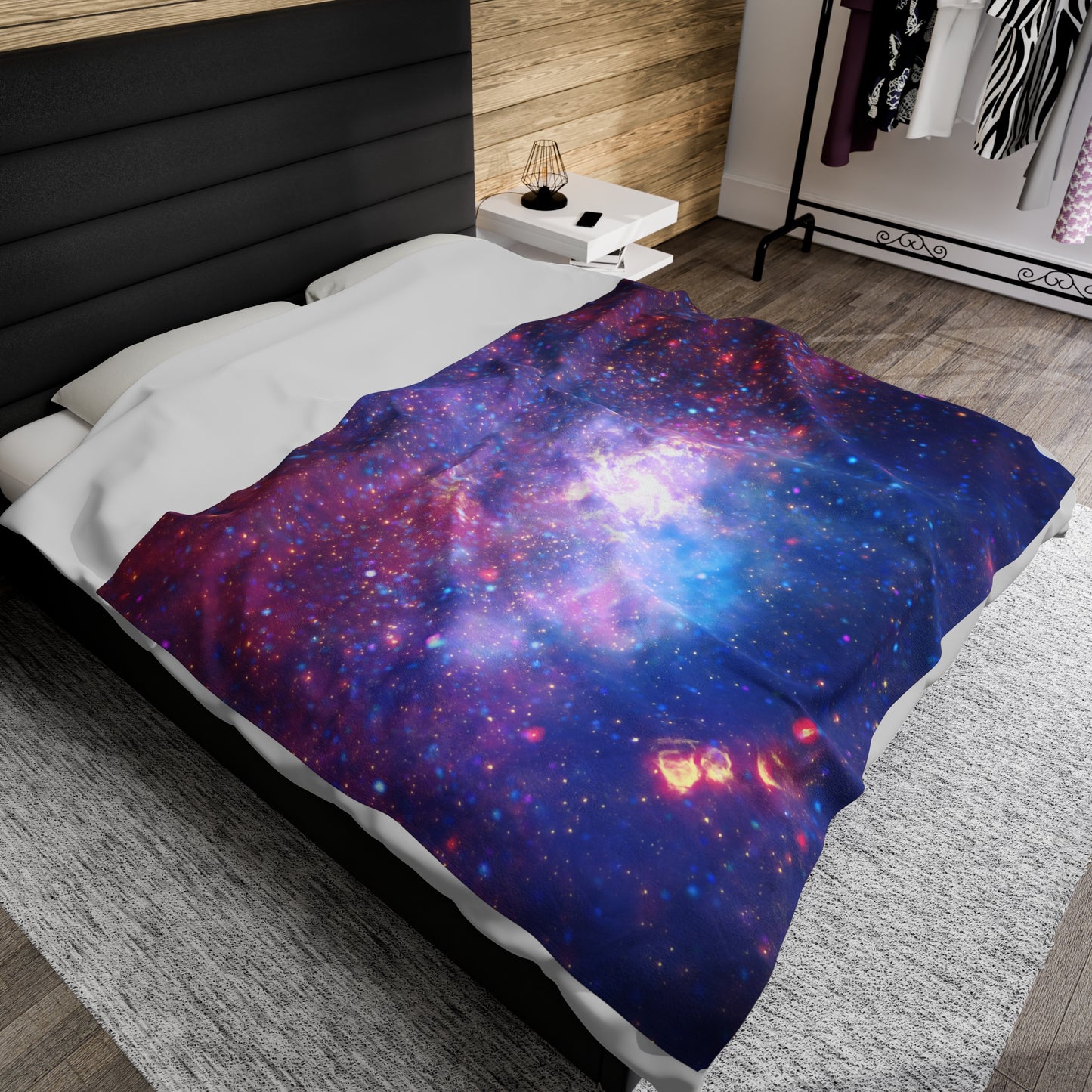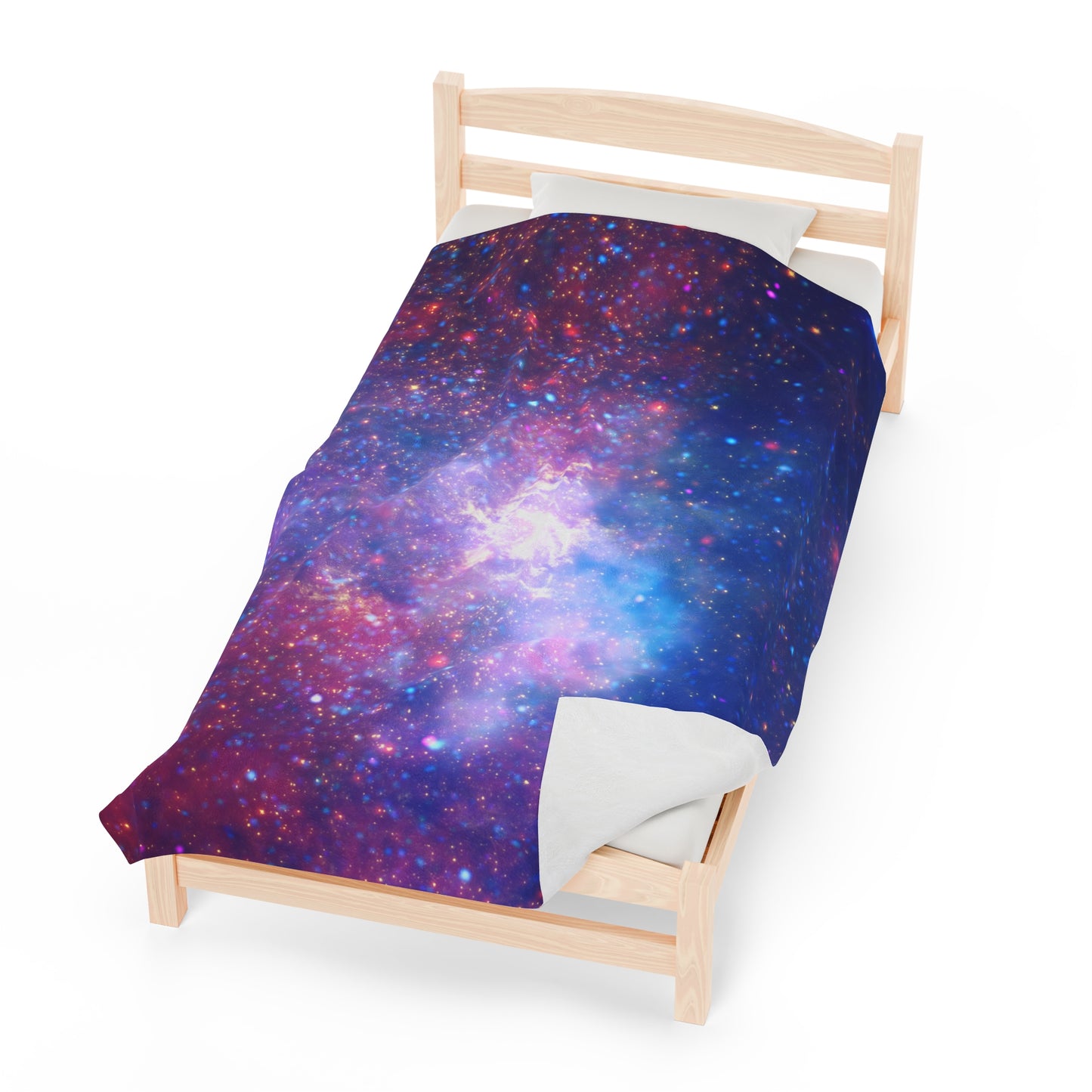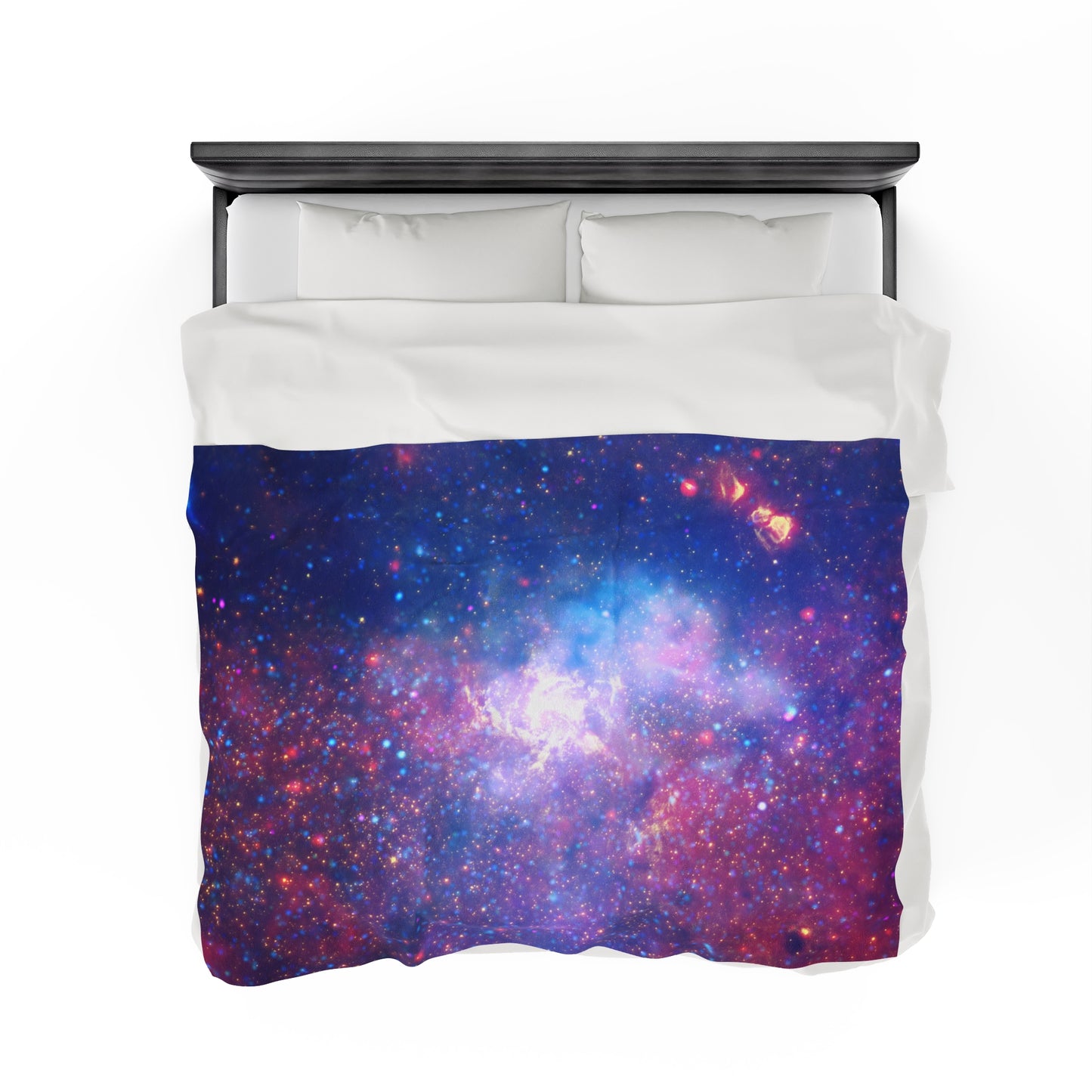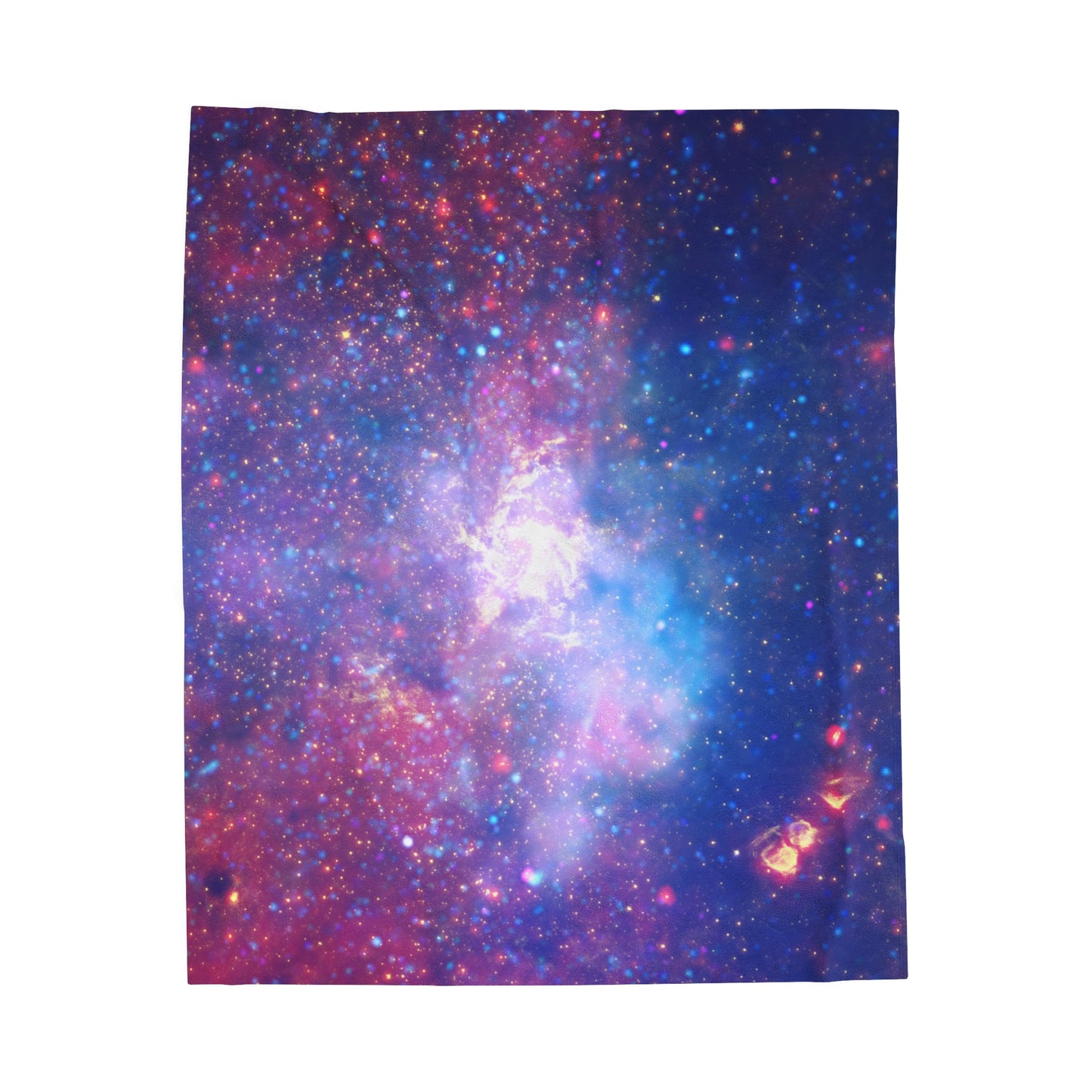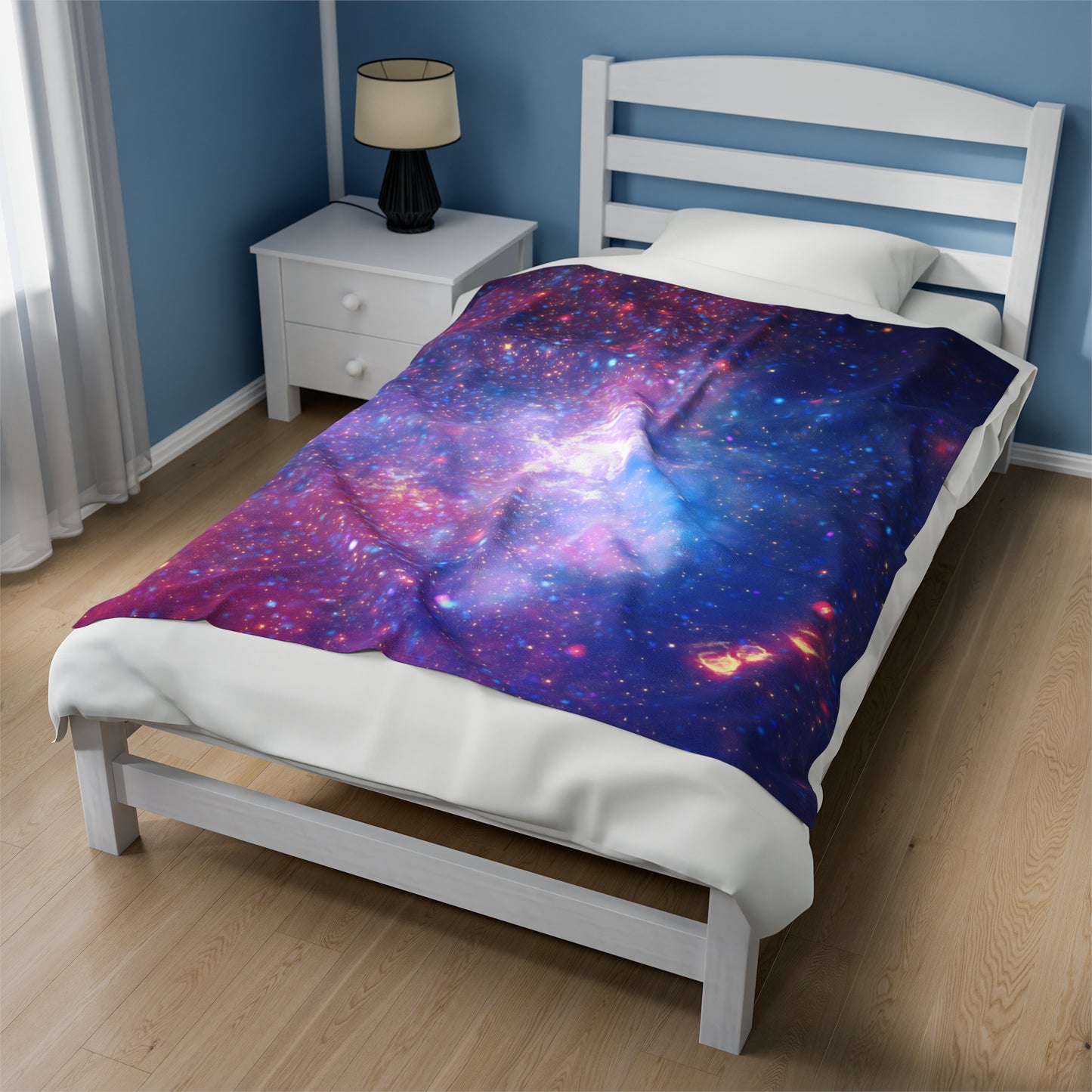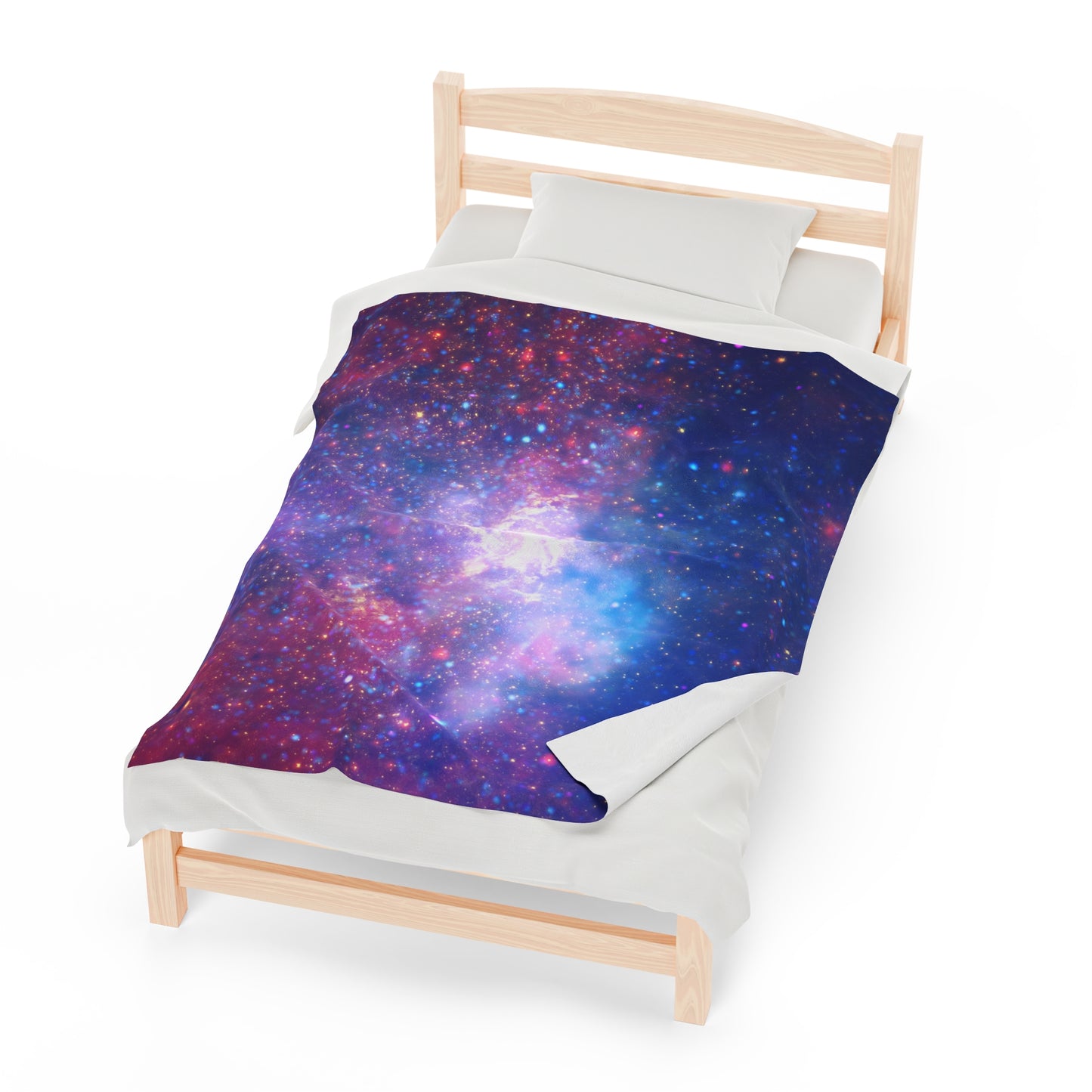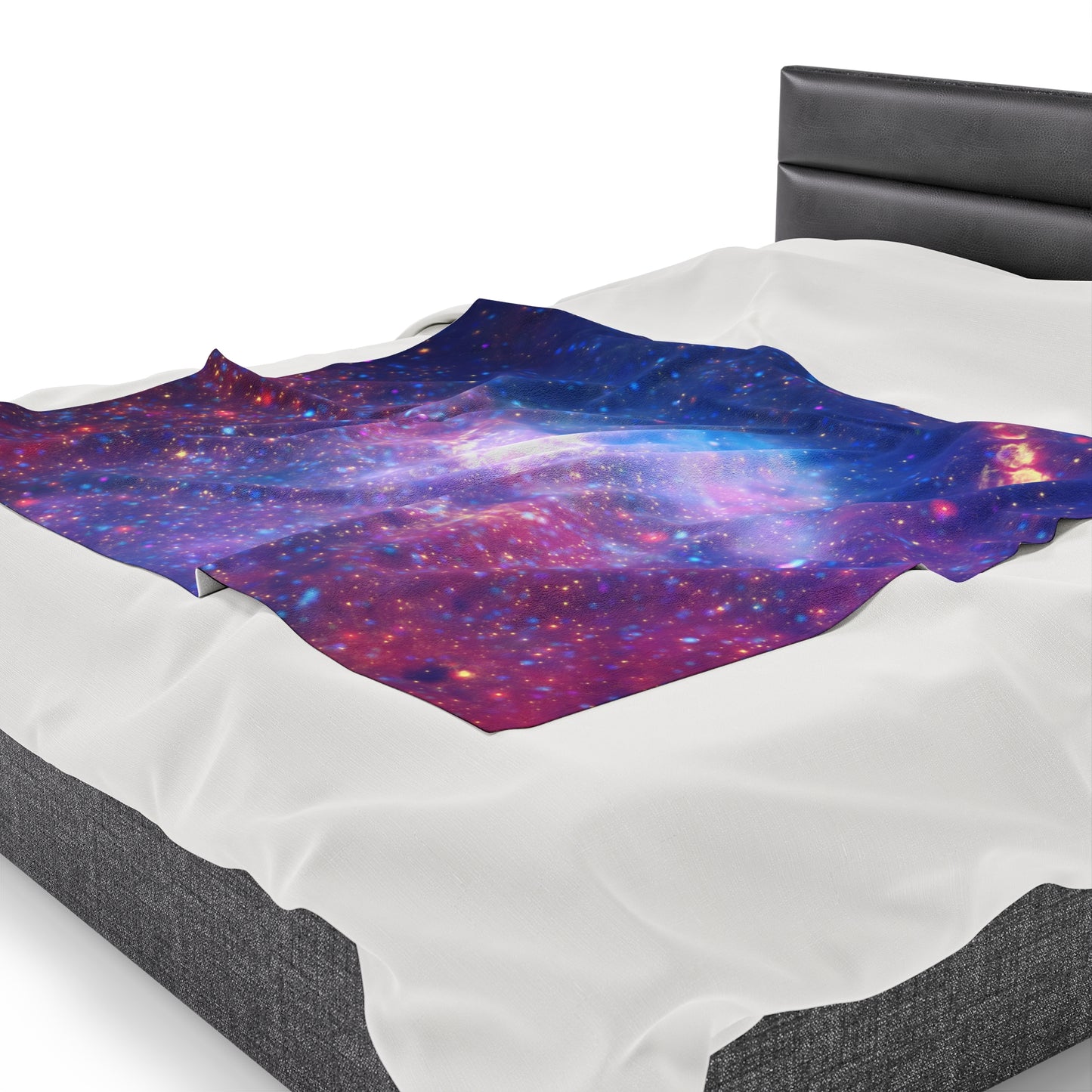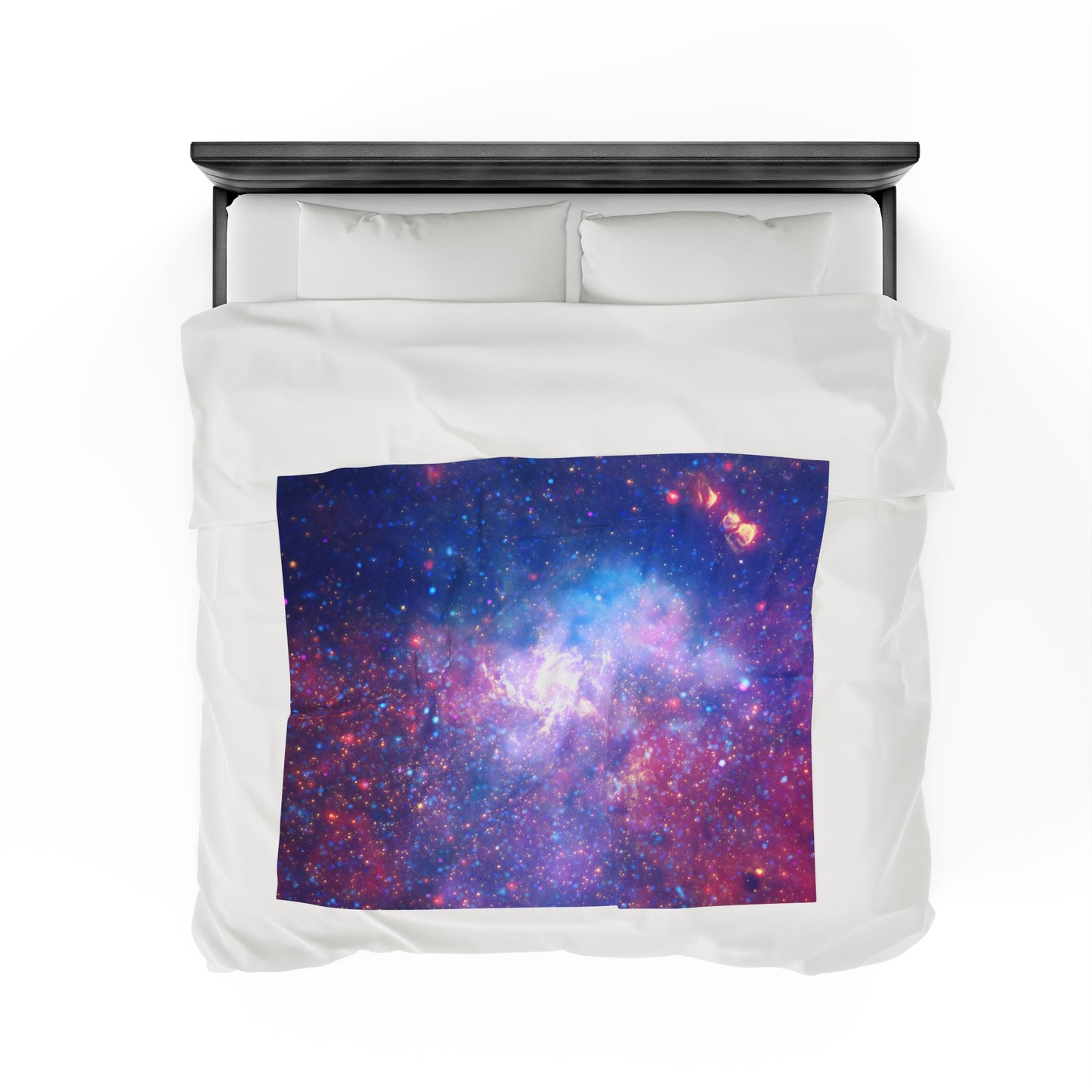Printify
Galactic Velveteen Plush Blanket - Center Of The Milky Way Galaxy
Galactic Velveteen Plush Blanket - Center Of The Milky Way Galaxy
Share
Couldn't load pickup availability
Enjoy a cosmically cozy vibe at home with this plush galactic velveteen blanket. It's soft to the touch and pleasantly warm.
The blanket is customized with a one-sided print of the center of the Milky Way galaxy, one of the most stunning images captured by the Hubble Space Telescope so far.
Warning: Though this blanket is the perfect gift for friends and family, you may want to keep it for yourself. Available in two sizes: 50x60 inches, 60x80 inches.
Due to variations in the production process, blanket sizes may vary slightly.
.: 100% polyester
.: The intergalactic print fully covers one side of the blanket in high detail and vibrant color
.: Medium heavy-weight fabric (8.85 oz/yd² (300 g/m²)) that feels extra soft to the touch (thickness of the fabric may slightly vary)
| 50" × 60" | 60" × 80" | |
|---|---|---|
| Width, in | 50.00 | 60.00 |
| Height, in | 60.00 | 80.00 |
About This Image:
An enormous swirling vortex of hot gas glows with infrared light, marking the approximate location of the supermassive black hole at the heart of our Milky Way galaxy. This multiwavelength composite image includes near-infrared light captured by NASA’s Hubble Space Telescope, and was the sharpest infrared image ever made of the galactic center region when it was released in 2009
. Dynamic flickering flares in the region immediately surrounding the black hole, named Sagittarius A*, have complicated the efforts of the Event Horizon Telescope (EHT) collaboration to create a closer, more detailed image. While the black hole itself does not emit light and so cannot be detected by a telescope, the EHT team is working to capture it by getting a clear image of the hot glowing gas and dust directly surrounding it.
In the composite image shown here, colors represent different wavelengths of light. Hubble’s near-infrared observations are shown in yellow, revealing hundreds of thousands of stars, stellar nurseries, and heated gas. The deeper infrared observations of NASA’s Spitzer Space Telescope are shown in red, revealing even more stars and gas clouds. Light detected by NASA’s Chandra X-ray Observatory is shown in blue and violet, indicating where gas is heated to millions of degrees by stellar explosions and by outflows from the supermassive black hole.

